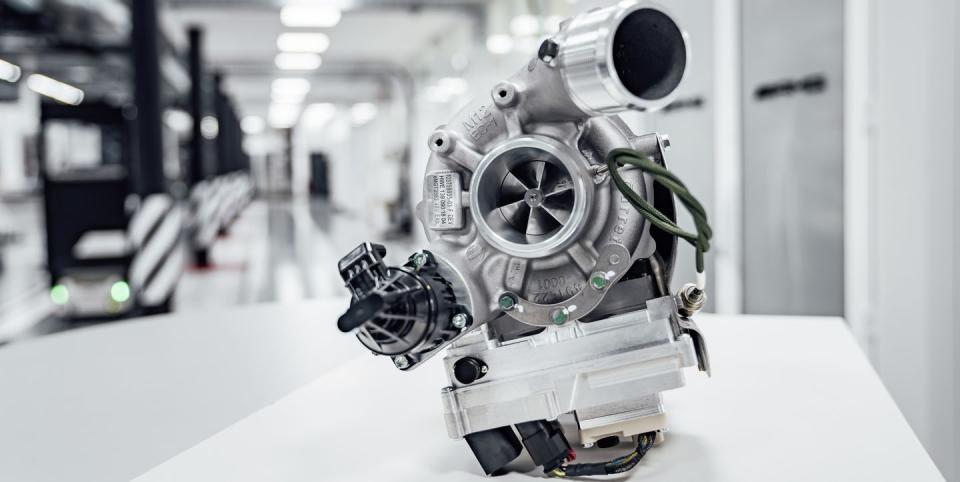Mercedes-AMG Is Putting an Electric Turbocharger Into Production

For a few years now, Formula 1 engines have used electric turbochargers, with an electric motor attached to the shaft that connects the compressor and turbine wheels. The effect is virtually no turbo lag, as the electric motor spins up the compressor and turbine far quicker than exhaust gasses alone. Neat stuff, and thanks to Mercedes-AMG, it's coming to production road cars.
AMG announced today that it'll use an electric turbocharger developed with Garrett in a future production model. A Mercedes spokesperson told Road & Track that this turbo will be used on a variant of AMG's 2.0-liter M139 (pictured throughout) currently used in the new 45-series cars. Mercedes isn't yet announcing what model this turbo will debut with, but it's worth noting that last year, reports emerged saying AMG might abandon the V-8 for the next C63, and instead adopt some sort of four-cylinder. This electric-turbocharged M139 certainly sounds like it could be it.
This new electric turbocharger is fascinating. The idea is to blend the quick response of a smaller turbo with the power-generating-capability of a big one. As with an F1 MGU-H, the electric motor is mounted directly to the shaft that connects the turbine and compressor wheels. The motor is driven off a 48-volt electrical system and starts spinning up the compressor wheel before exhaust gasses spin up the turbine.
Mercedes-AMG makes bold claims about the results. "Turbo lag—the delayed response of a conventional turbocharger—is eliminated by the electric motor," the brand said in a press release. The electric motor, which is 1.6 inches wide, keeps the compressor wheel spinning even when the driver comes off throttle, so there's no waiting when getting back to power. Mercedes says the electric motor also helps improve low end torque, and eventually, it might be able to harvest energy on its own, just like an MGU-H.
The M139 offers a maximum of 414 hp and 369 lb-ft of torque, and it's unclear how these numbers will change with the addition of the new electric turbocharger. Mercedes told Road & Track that "the use of the electrified turbocharger is not aimed at achieving the highest possible peak power; this technology rather increases the efficiency, the response behavior and the usable speed range of charged engines."
It's also worth noting that this is different than the electric auxiliary compressor AMG uses in the 53-series cars. That unit is a separate compressor driven by an electric motor, which feeds air into the engine directly or the turbocharger. It achieves similar goals—reducing turbo lag and improving low-end torque—but it's a separate device from the turbocharger.
Mercedes will employ a similar electric turbocharger in its ONE hypercar, which borrows the engine from its 2017 F1 car. But this is arguably more important. Modern F1 tech is coming to mainstream production cars.
You Might Also Like

 Yahoo Autos
Yahoo Autos 